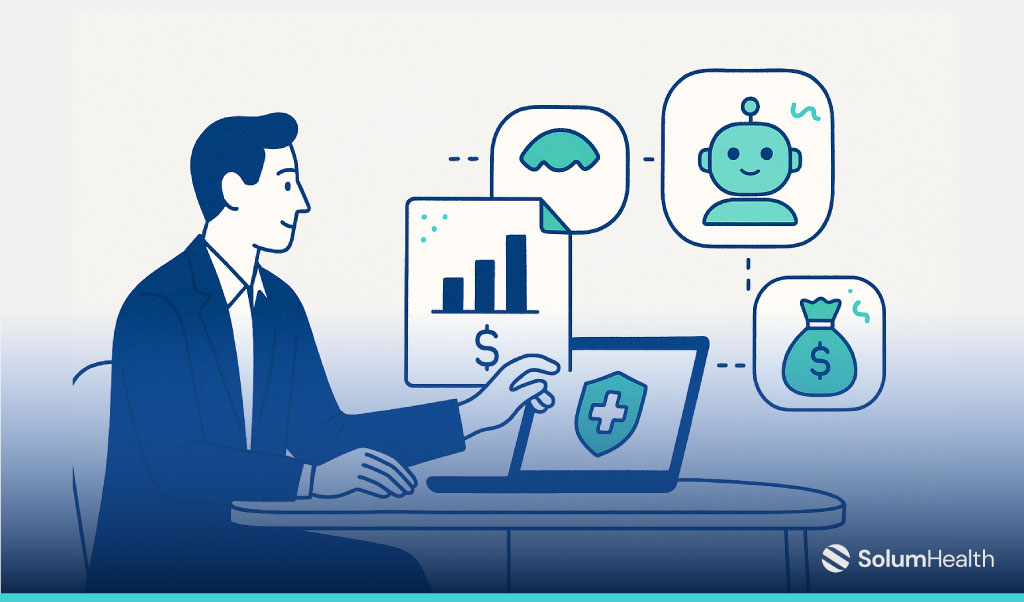New tax rules are tough but automation helps clinics save money, stay compliant, and operate smarter in 2025.

Automation is health providers’ secret weapon. Technology and automation are not explicitly mandated by the One Big Beautiful Bill Act (OBBBA), the new tax law. However, the latest changes provide indirect incentives for adopting high-tech solutions.
Automation helps clinics absorb the shocks of policy changes. Even if it’s a new tax form or a loss of covered patients, automation drives efficiency, accuracy, and smarter financial management. And thanks to 2025’s expensing rules, investing in these technologies has never been more tax-friendly.
Discover how embracing automation can help your practice have a competitive edge under the new 2025 tax rules.
• Cost-Cutting Through Tech:
Every administrative hour saved translates to dollars in your pocket. Automation can substantially reduce the labor and time spent on non-clinical tasks, such as billing, coding, scheduling, claims follow-up, and compliance documentation.
For example, instead of a staff member manually preparing dozens of new 1099 forms for every small contractor payment, your accounting software can automate tracking and only flag those above the limit, saving hours.
By deploying robotic process automation or AI-driven revenue cycle tools, clinics have trimmed their admin costs, which is crucial if margins are being squeezed by lower reimbursements or higher patient bad debt.
Moreover, if you purchase new automation software or equipment, you can use the full immediate expensing under OBBBA and get a tax deduction for investing.
• Improve Accuracy and Compliance:
Automation keeps your operations running smoothly without missing a step and reduces the risk of errors or missed opportunities.
Modern payroll systems, for instance, can automatically adjust withholding for the “no tax on overtime” deduction so that your employees see the benefit in each paycheck without manual calculations.
Accounting software can be set to incorporate new tax credits, such as the permanent family leave credit, into your quarterly tax filings.
In the event of IRS inquiries or an audit, having digital records and automated logs of transactions makes it easier to substantiate deductions. Fewer errors, smoother audits.
• Offset Rising Labor Costs and Potential Staff Cuts:
A sobering aspect of the 2025 reforms is the likely increase in uncompensated care and downward pressure on revenues, due to a possible reduction in insurance coverage.
If you must cut hours or face staffing shortages, automation bridges the gap. If your front-desk staffing hours must be reduced to save costs, implementing an online patient portal with self-scheduling and automated intake can maintain service levels.
In clinical operations, AI-based tools can aid practitioners by writing draft session notes or analyzing treatment data, allowing providers to see more patients or focus on care quality rather than paperwork.
By boosting productivity, automation helps clinics maintain profitability and service if you need to tighten personnel budgets.
• Enhance Revenue Capture:
Automation can also directly enhance revenue, which in turn buffers your practice against tax and policy headwinds.
Automatic insurance checks and analytics-driven billing systems mean fewer denied claims and quicker cash flow. Additionally, data analytics can help identify profitable service lines or patient populations, guiding you to expand offerings that increase revenue.
Technology helps capture every dollar owed, which is vital when external changes, such as lower insurance coverage rates, threaten top-line growth.
• Positioning for Future Incentives:
Adopting automation and demonstrating tech-forward care could position your practice for any future incentives or relief programs. By embracing tech now, you’re better positioned for future state and federal incentives.
While the current tax bill didn’t directly create a credit for “AI adoption” in healthcare, policymakers are clearly thinking about tech.
In essence, automation is an investment in readiness. Implementing it aligns your practice with the industry’s direction in both ways, clinically and financially.
While “healthcare automation and tax savings” might not be explicitly linked by a line in the IRS code, they are connected in practice. This is the time to innovate: the tax bill effectively gives health practitioners a write-off to modernize their operations. Sizing the opportunity can make the clinic emerge more resilient and profitable.
To learn more about 2025 Tax reform and who gets more impacted, visit the ABC of 2025 Tax Bill for Healthcare Providers
Solum Health: The Automation Edge You Need
Automation isn’t a luxury; it’s a necessity for staying ahead of 2025 tax changes. Solum’s AI-driven platform helps practices automate everything from intake to prior authorizations, making compliance easier and operations more efficient. As a healthcare-focused company, Solum also offers downloadable resources to help your practice stay compliant and financially strong.

For years, I managed a mental health practice with over 80 providers and more than 20,000 patients. Now, I’m building the tool I wish I had back then, AI automation that makes intake, insurance verification, and scheduling as seamless as running a healthcare practice should be.